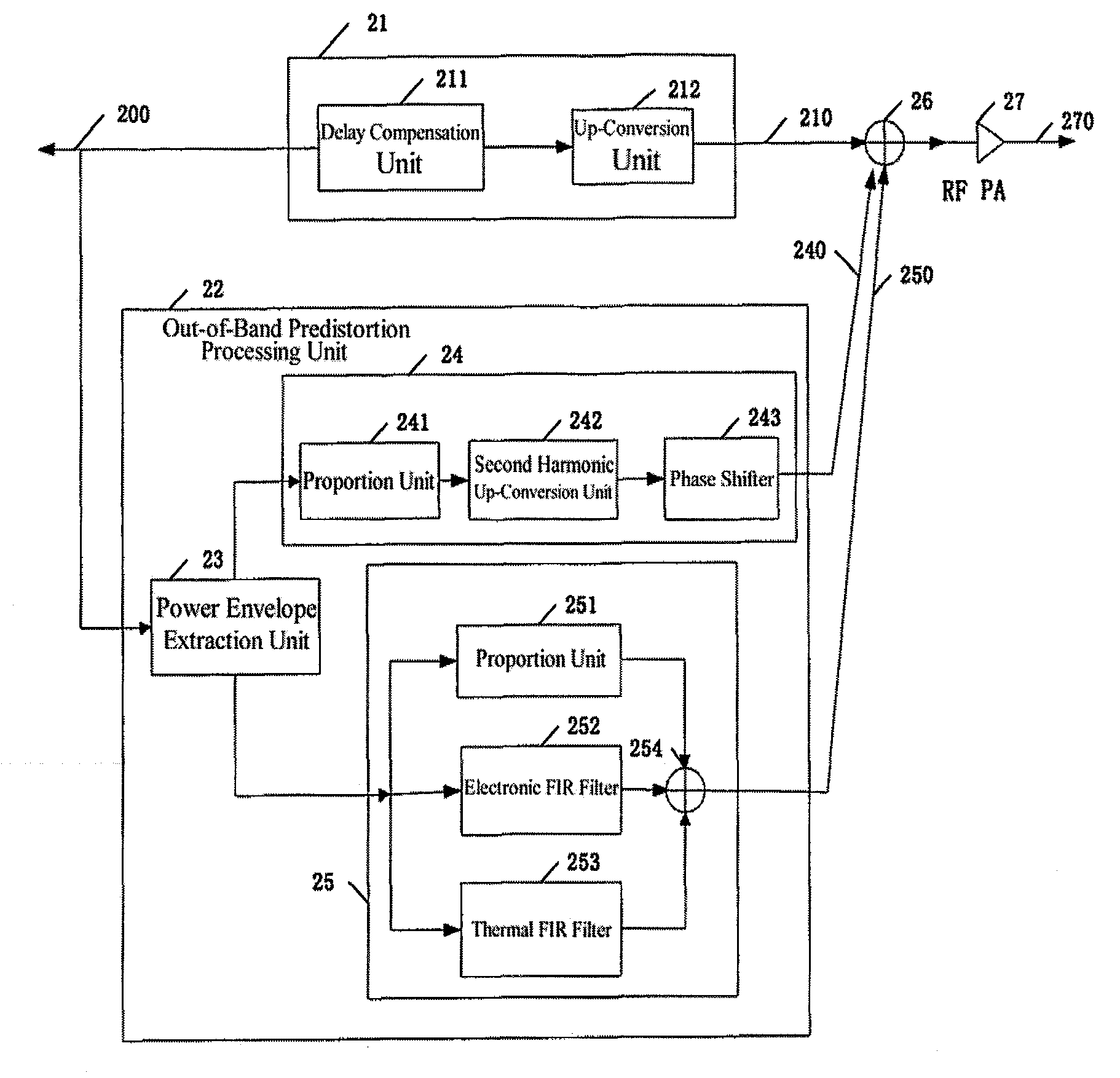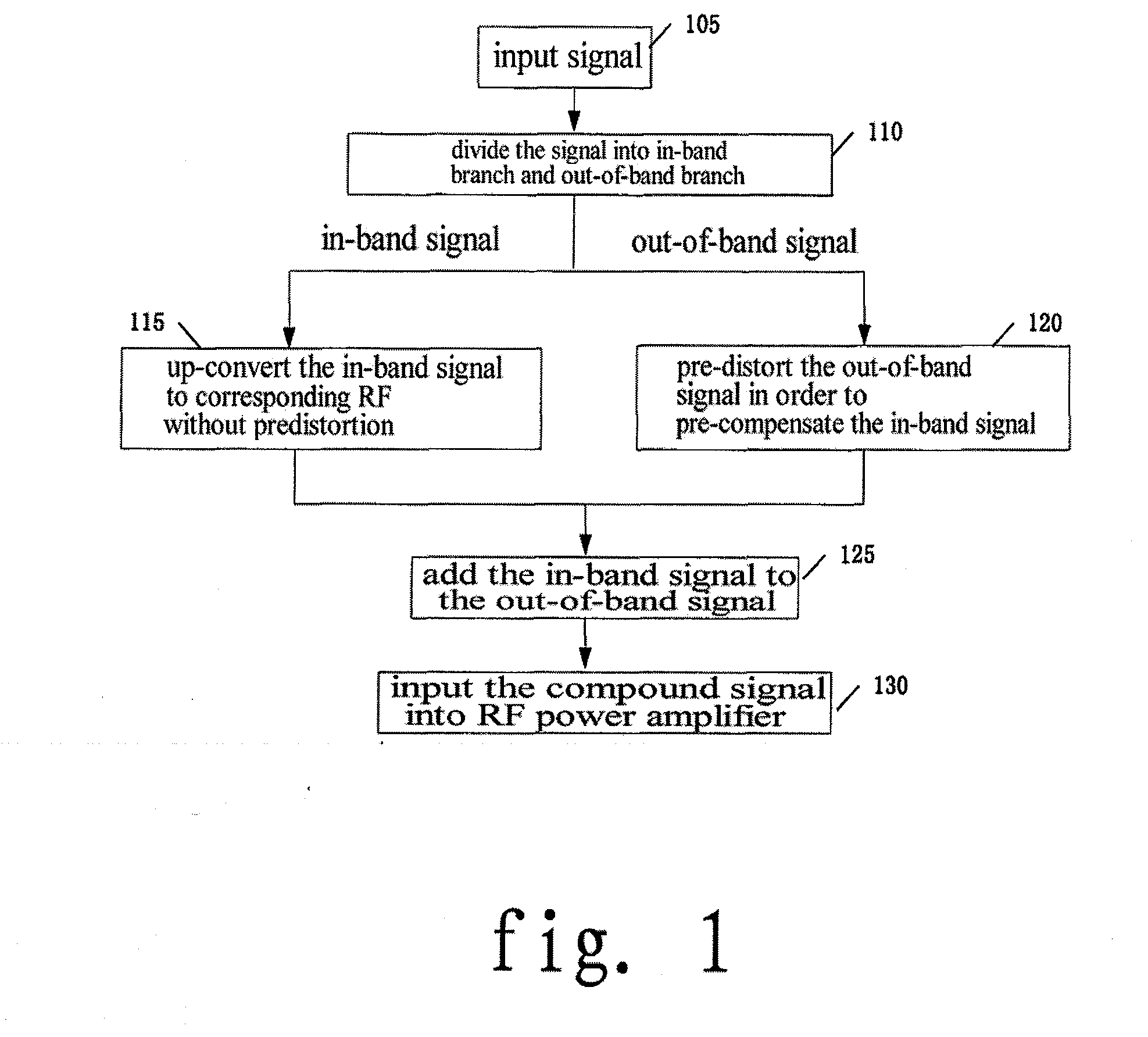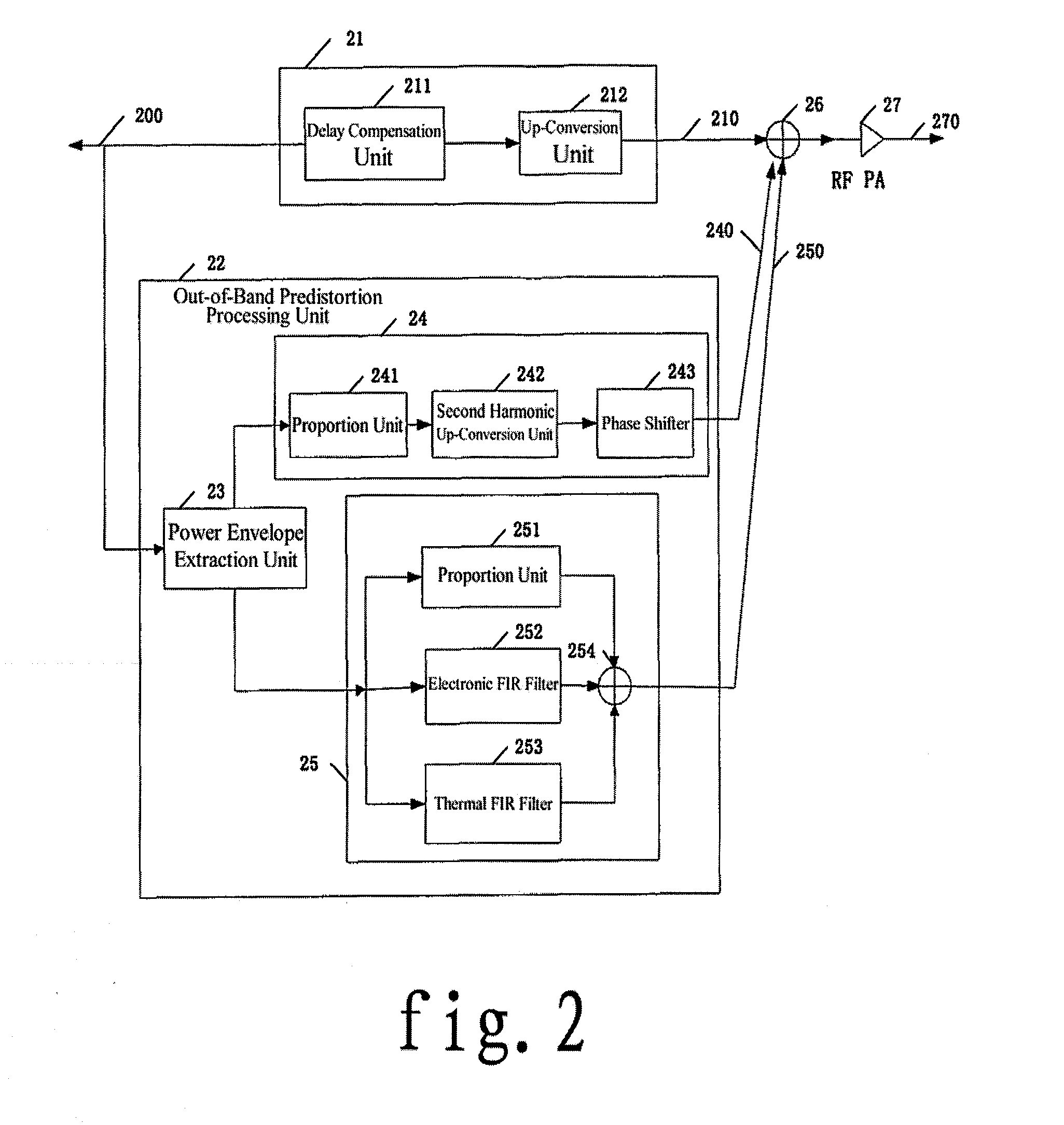[0021]The first
advantage of the present invention is that: it can produce the out-of-band predistortion signal by directly using the I, Q compound signal of IF or RF (apparently, it can also directly use the digital base band signal) while not needing compensation in the digital base band of the system, as such it makes it possible to design the predistortion system independent of the base band system. This feature greatly facilitates and simplifies the design and application of the predistortion system, moreover, the linearization system designed according to this method can be combined with the RF power amplifier to form an independent unit module. All current digital predistortion systems need to be processed in the digital base band, so the interface and system compatibility have to be considered, largely limiting the application scope of the predistortion linearization system. However, the method and system of this invention are able to get rid of this restriction.
[0022]The second
advantage of the present invention is that a higher compensation precision can be achieved than that of the conventional predistortion methods. In one embodiment of this invention, since the out-of-band predistortion signal and the input RF signal of the amplifier are not in the same
frequency band, when converting from the digital domain to the analog domain, the precision of the out-of-band predistortion signal is totally decided by the precision of the digital-to-analog converter (DAC). Whereas in the conventional predistortion methods, the compensation signal and useful signal are in the same
frequency band and their amplitudes are overlapped, so only a part of bits of the DAC can be used to distinguish the predistortion signal, thus the quantization error of the predistortion signal totally depends on the relative amount of the original signal in regard to the predistortion signal. However, the original signal is usually over ten times or even several tens of times of the predistortion signal, causing a considerable quantization error of the predistortion signal. For example, supposing the DAC has 12 bits, and the original signal is 10-20 times higher than the predistortion signal, i.e., approximately 24 times of the predistortion signal, then for the conventional predistortion methods, the effective quantization precision of the predistortion signal will be only about 8 bits; while if the out-of-band predistortion method and system of the present invention are applied, the effective quantization precision of the predistortion signal will be 12 bits, approximately ten times higher than that of the conventional methods.
[0023]The third
advantage of the present invention is that the
memory effect of the amplifier can be effectively compensated. The memory effect of the amplifier causes that the nonlinear
intermodulation distortion outputted by the amplifier not only depends on the current input signal, but also on the previous input signal. The memory effect of the amplifier requires the amplitude and phase of the compensation signal to be able to vary along with this characteristic of ever changing
distortion. The memory effect of the amplifier mainly has two styles, one is
electronic memory effect and the other is thermal memory effect, either of which is closely related to the
power envelope of the input signal. In conventional predistortion methods, the memory effect is considered in the digital base band, wherein the predistortion signal is up-converted to the RF together with the original signal, which is equivalent to using a RF predistortion signal to compensate the nonlinear
intermodulation distortion caused by the characteristic of the amplifier at the
power envelope frequency, such kind of compensation to the memory effect is indirect; on the other hand, since the RF power amplifier is only a part of the whole transmitter link, and the
frequency characteristic caused by the memory effect of the amplifier is probably submerged in the influence of other components, it is very difficult to distinguish and at the same time effectively compensate the real memory effect. However, the out-of-band predistortion method applies an out-of-band predistortion signal which has
low frequency and is closely related to the
power envelope of the amplifier to compensate the memory effect of the amplifier. Since in this method, the compensation signal and the power envelope of the input signal are in the same frequency band, and the compensation signal is directly injected into the amplifier which means it will not be affected by other components, the compensation of this method to the memory effect of the amplifier is direct in regard to the conventional predistortion methods. Compared with indirect compensation, the direct compensation has a better effect and is easier to be implemented.
[0024]The method and system for out-of-band predistortion linearization of this invention is able to compensate the nonlinear
intermodulation distortion of the RF power amplifier, especially to effectively compensate the memory effect of the amplifier. Compared with the existing digital predistortion technique, the system of this invention essentially overcomes the limitation of the predistortion effect caused by the memory effect, significantly improves the linearization performance of the predistortion system, largely expands the linearization bandwidth of the predistortion system, and reduces the cost of the predistortion linearization system.
 Login to View More
Login to View More  Login to View More
Login to View More 


